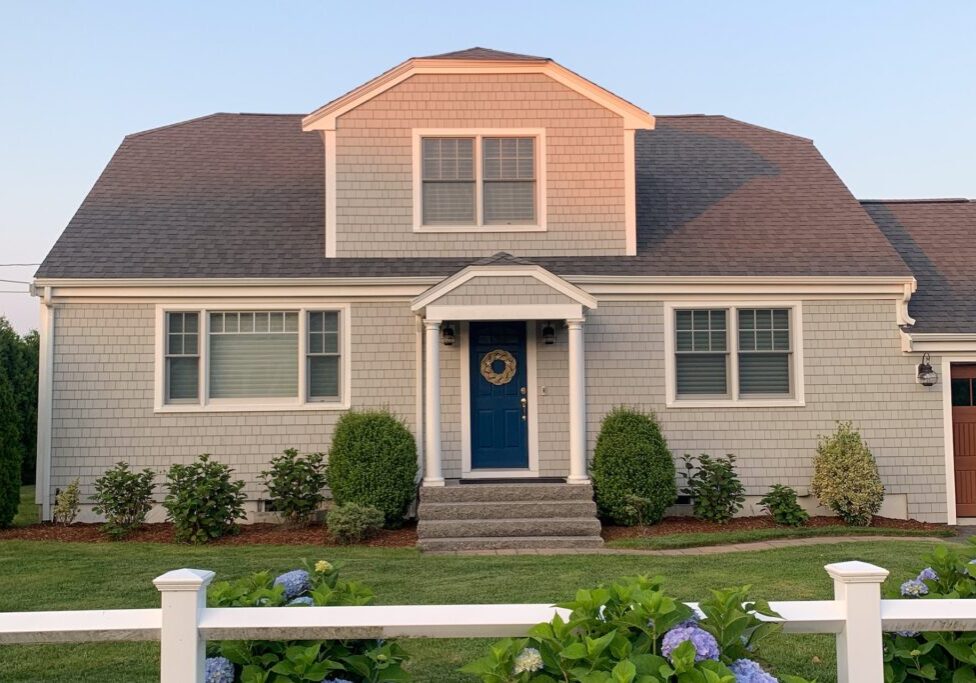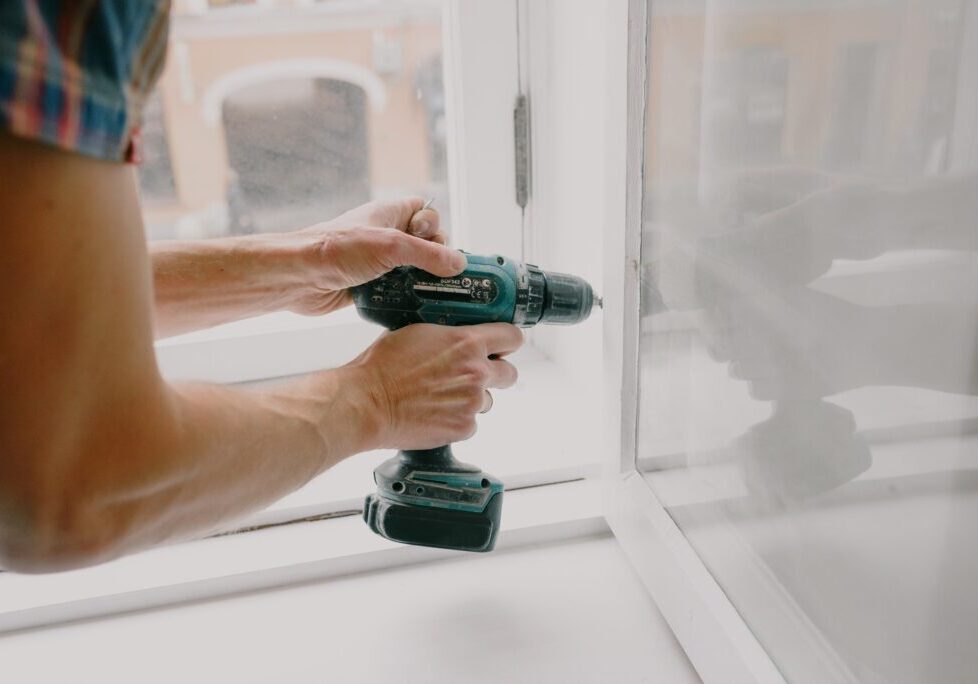How to Choose the Right Baseboards for your Home
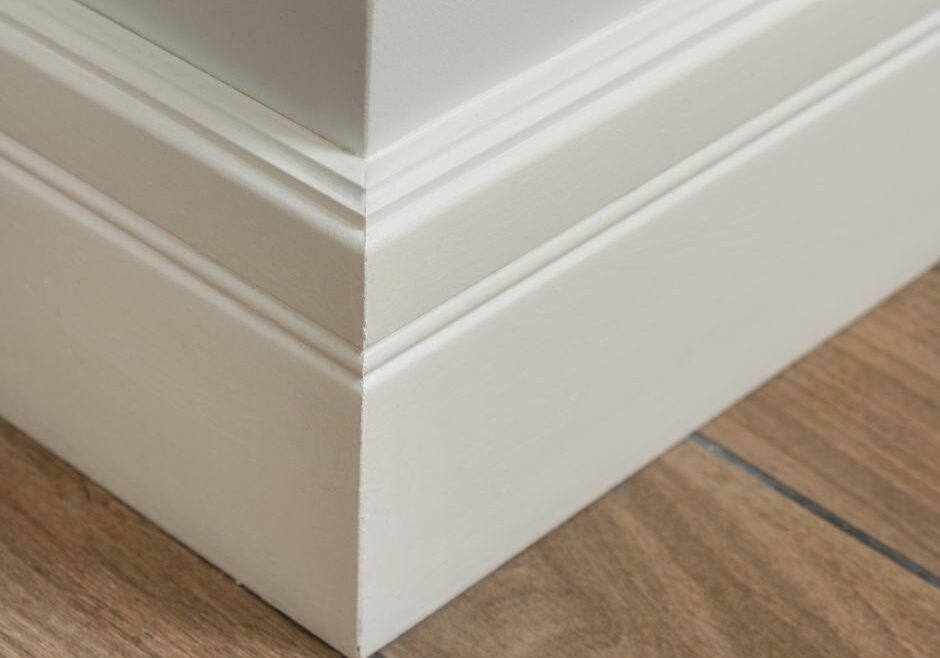
Check out this comprehensive guide to help homeowners choose the right baseboards for their remodel or construction project.
Baseboards might seem like a minor feature, but they play a crucial role in tying together the overall look of a room. If you’re considering new baseboards for your older homes, or you are adding the final touches to your new construction, there are several factors to consider to ensure you make the right choice for your space.

1. Assess Your Ceiling Height:
Standard baseboard heights typically range from 3 inches to 6 inches. However, it’s essential to note that there isn’t a universally accepted standard height for baseboards. The height you choose depends on various factors, including personal preference, ceiling height, architectural style, and the size of the room.
Here’s a breakdown of common baseboard heights and their typical applications:
- 3 inches to 4 inches: These shorter baseboards are often used in rooms with standard ceiling heights (typically 8 feet). They provide a subtle finished look without overwhelming the space. They are commonly found in newer homes or those with contemporary design styles.
- 4 inches to 5 inches: This range is versatile and suitable for most residential applications. It works well in rooms with standard to slightly taller ceiling heights. These baseboards offer a bit more presence and visual impact while still maintaining a proportionate look.
- 5 inches to 6 inches: Taller baseboards in this range are often chosen for rooms with higher ceilings (9 feet or more). They add a touch of elegance and architectural detail, making the space feel more upscale and refined. Taller baseboards can also help balance the proportions of rooms with larger dimensions.
Ultimately, the choice of baseboard height depends on the overall aesthetic you want to achieve, as well as practical considerations such as the style of your home and the size of the room. It’s essential to consider the scale and proportions of the space when selecting baseboard heights to ensure a harmonious look throughout your home.
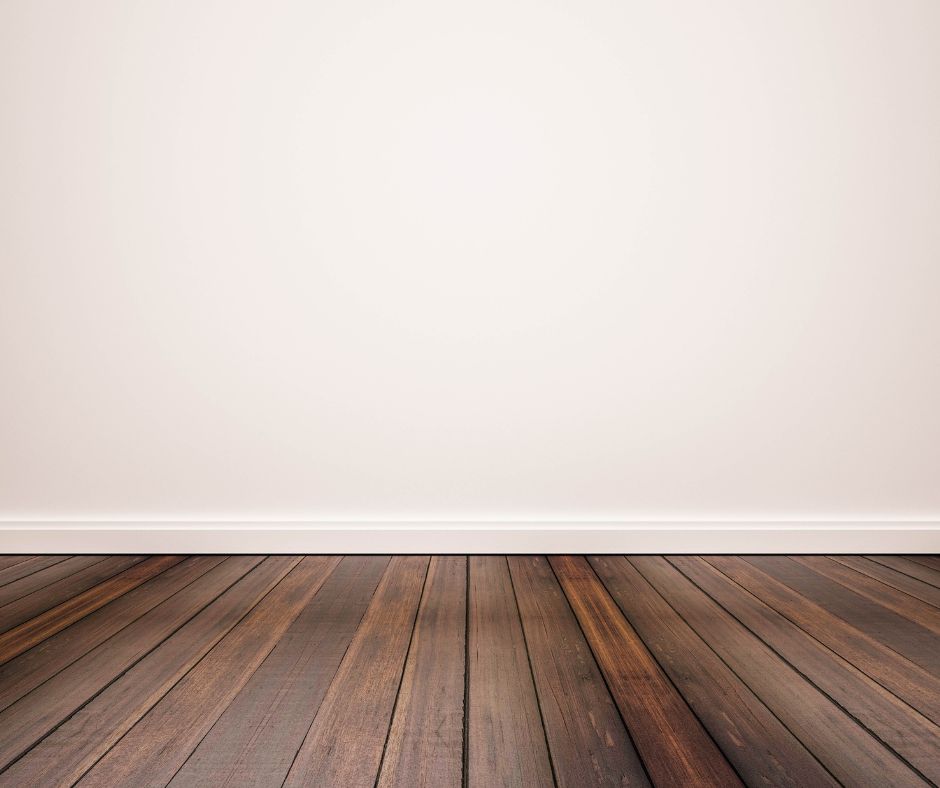
2. Consider Baseboard Materials:
Baseboards are available in a variety of different materials, each with its own unique characteristics and benefits. Wood baseboards offer timeless beauty and warmth, with the ability to be stained or painted to match any décor, though they require regular maintenance. Medium-Density Fiberboard (MDF) baseboards provide a smooth finish and cost-effective alternative to solid wood, but may be prone to moisture damage if not properly sealed. Vinyl baseboards are highly resistant to moisture and easy to clean, making them ideal for high-moisture areas, though they may lack the visual appeal of natural wood.
Composite materials blend wood fibers and synthetic materials for durability and moisture resistance, offering versatility in style and finish. Plastic baseboards are incredibly durable and resistant to rot and decay, suitable for outdoor use, but may have limited design options and aesthetic appeal. When choosing the right baseboard material, it’s essential to consider factors such as durability, maintenance requirements, aesthetic preferences, and budget to ensure the perfect fit for your space.
Here’s a breakdown of the materials typically used for baseboards:
Wood:
- Benefits:
- Natural beauty and warmth.
- Can be stained or painted to match any décor.
- Durable and long-lasting.
- Drawbacks:
- Prone to warping, cracking, and damage from moisture.
- Requires regular maintenance such as sanding, staining, or painting.
- Generally more expensive compared to other materials.
Medium Density Fiberboard (MDF):
- Benefits:
- Smooth finish and uniform appearance.
- Cost-effective alternative to solid wood.
- Resistant to warping and cracking.
- Drawbacks:
- Not as durable as solid wood, susceptible to moisture damage if not properly sealed.
- Limited design options compared to wood.
- May emit formaldehyde fumes if not properly manufactured or installed.
Vinyl:
- Benefits:
- Highly resistant to moisture, making it ideal for bathrooms, kitchens, and basements.
- Easy to clean and maintain.
- Available in a wide range of colors and styles.
- Drawbacks:
- Less visually appealing compared to natural wood or MDF.
- Limited design options, may not offer the same level of customization.
- Can be prone to fading or discoloration over time, especially when exposed to sunlight.
Composite Materials:
- Benefits:
- Blend of wood fibers and synthetic materials, offering durability and moisture resistance.
- Versatile and available in various styles and finishes.
- Less susceptible to warping or damage compared to solid wood.
- Drawbacks:
- Quality can vary depending on the specific materials used.
- May not offer the same level of authenticity as natural wood.
- Can be more expensive than other materials, depending on the composition.
Plastic or PVC:
- Benefits:
- Highly durable and resistant to moisture, making it suitable for outdoor use and high-moisture areas.
- Easy to clean and maintain.
- Resistant to rot, decay, and insect damage.
- Drawbacks:
- Limited aesthetic appeal, may not offer the same warmth and character as wood or MDF.
- Can be more challenging to install compared to other materials.
- Limited design options and color choices.
When choosing a baseboard material, it’s essential to consider factors such as durability, maintenance requirements, aesthetic preferences, and budget. Each material offers its own set of advantages and drawbacks, so it’s important to weigh these factors carefully to select the best option for your specific needs and preferences.

3. Explore Different Styles:
Baseboards come in various styles and profiles, from simple and flat to more elaborate designs with crown molding or rounded shapes. Consider the architectural style of your home and your personal preferences when selecting a style that complements your interior design. Craftsman style baseboards with clean lines and subtle detailing are ideal for traditional homes, while modern baseboards with sleek profiles are well-suited for contemporary spaces.
Baseboard styles are always developing, and there is no limit to the potential options that could be created! Here is a list of some of the most popular styles available today:
- Flat Baseboards: These are simple and straightforward, featuring a flat profile that runs along the bottom of the wall. They provide a clean and modern look, suitable for contemporary interiors.
- Rounded Baseboards: Rounded baseboards have a gentle curve along the top edge, adding a subtle touch of elegance to the room. Builders use them in traditional or transitional design schemes.
- Colonial Baseboards: Colonial-style baseboards feature a small, decorative detail along the top edge, adding a classic and refined look to the space. They are commonly found in colonial or Georgian-style homes.
- Beaded Baseboards: Beaded baseboards have a row of small beads or grooves along the top edge, creating a textured and visually interesting appearance. They add a touch of sophistication to the room and are often used in traditional or cottage-style homes.
- Shoe Moulding: Shoe moulding, also known as quarter round, is a small, rounded trim that sits at the bottom of baseboards, covering the gap between the baseboard and the floor. It provides a finished look and helps protect the baseboard from damage.
- Cove Baseboards: Cove baseboards have a concave profile that curves inward at the top, creating a subtle indentation. Commercial buildings often use them but they can also add a touch of architectural interest to residential spaces.
- Modern Baseboards: Modern baseboards feature clean lines and minimal detailing, reflecting the sleek and minimalist aesthetic of contemporary design. They are often characterized by a flat or slightly angled profile.
- Craftsman Baseboards: Craftsman-style baseboards feature simple, clean lines with subtle detailing, such as bevels or small grooves. We commonly find them in Craftsman or Arts and Crafts-style homes, adding a touch of craftsmanship and character to the space.
These are just a few examples of common baseboard styles, each offering its own unique look and feel to complement various interior design styles and preferences.
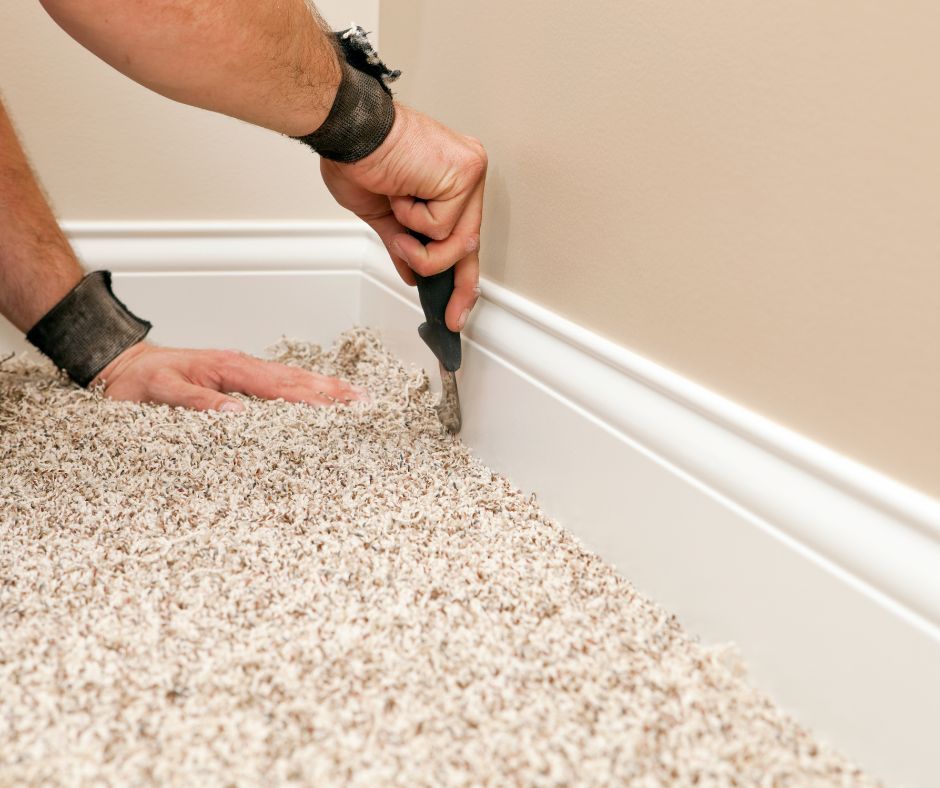
4. Match Baseboards with Trim and Flooring:
- Coordinate your baseboards with other trim elements in your home, such as door casings, window trim, and crown molding, for a cohesive look. Choose baseboard materials and finishes that complement your wood floors or wall surfaces.
- When selecting baseboard trim, consider the overall design goals of your space. For example, if you’re aiming for a seamless and minimalist look, opt for a simple profile without elaborate detailing.
5. Take Room Size into Account:
The size of the room can significantly impact the choice of baseboards in several ways, and there are some general rules to observe in choosing the right baseboards:
- Proportion and Scale: In larger rooms, taller baseboards can help visually anchor the space and create a sense of balance. Conversely, in smaller rooms, taller baseboards may overwhelm the space and make it feel cramped. Choosing baseboards that are proportionate to the size of the room helps maintain visual harmony.
- Ceiling Height: Rooms with higher ceilings can accommodate taller baseboards without looking disproportionate. Taller baseboards in rooms with high ceilings can add architectural interest and enhance the overall grandeur of the space. In contrast, rooms with standard or lower ceilings may benefit from shorter baseboards to avoid crowding the visual space.
- Visual Impact: The size of the room can influence the visual impact of baseboards. In larger rooms, baseboards with more intricate detailing or a larger profile size may make a bolder statement and contribute to the overall design scheme. In smaller rooms, simpler baseboard styles with a smaller profile size may be more appropriate to maintain a cohesive and visually pleasing look.
- Functionality: The size of the room can also impact the functionality of baseboards. In high-traffic areas or rooms with furniture placed close to the walls, taller baseboards can provide added protection against scuff marks and damage. Additionally, taller baseboards may be more effective at concealing imperfections along the wall surface in larger rooms.
- Cost Considerations: The size of the room may also affect the cost of baseboard installation. Larger rooms require more linear footage of baseboards, which can increase material and labor costs. When choosing baseboards for a room, it’s essential to consider the overall budget and weigh the cost against the desired aesthetic and functional benefits.
Overall, the size of the room plays a crucial role in determining the appropriate baseboard choice. By considering factors such as proportion, ceiling height, visual impact, functionality, and cost, homeowners can select baseboards that enhance the overall look and feel of their space while meeting practical needs.
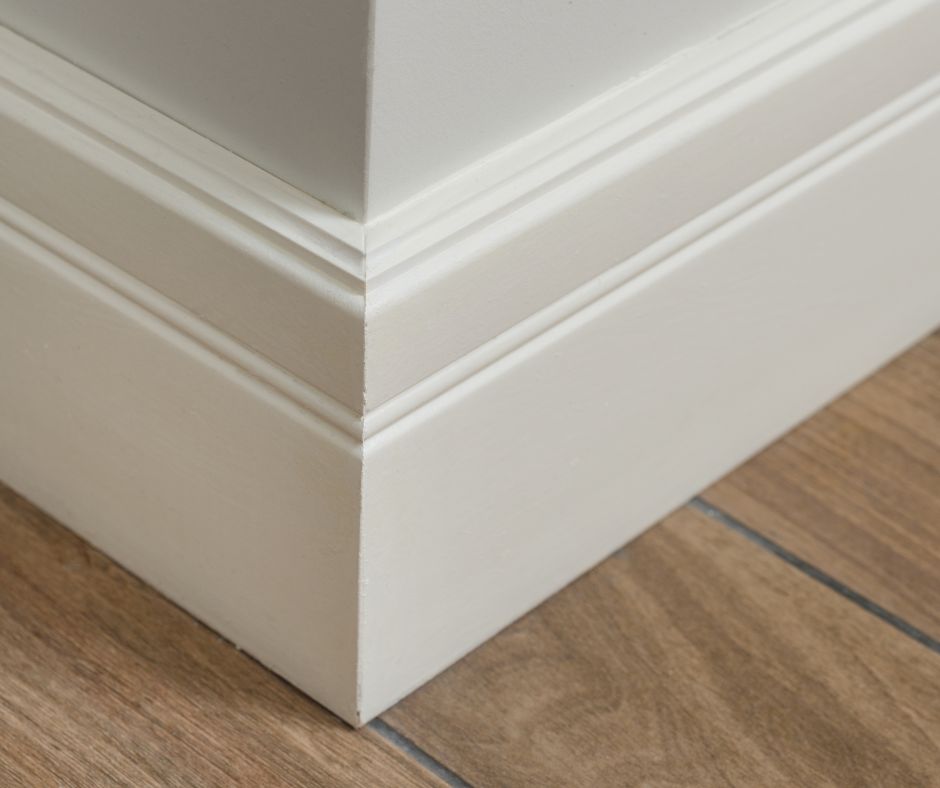
6. Factor in Personal Preference:
- Ultimately, the right baseboards for your home depend on your personal style and preferences. Consider how different types of baseboards will contribute to the overall aesthetic of your space and choose accordingly.
In Conclusion:
Choosing the right baseboards for your home involves considering factors such as ceiling height, baseboard materials, style preferences, and room size. By carefully assessing these factors and exploring your options, you can select baseboards that enhance the beauty and character of your space.
Whether you prefer the timeless elegance of wood baseboards or the versatility of medium-density fiberboard, there’s a perfect match out there for your home. So, elevate your space with the right baseboards and enjoy the finished look they bring to your rooms.
If you are changing the floor in your kitchen – make sure you check out this article!

